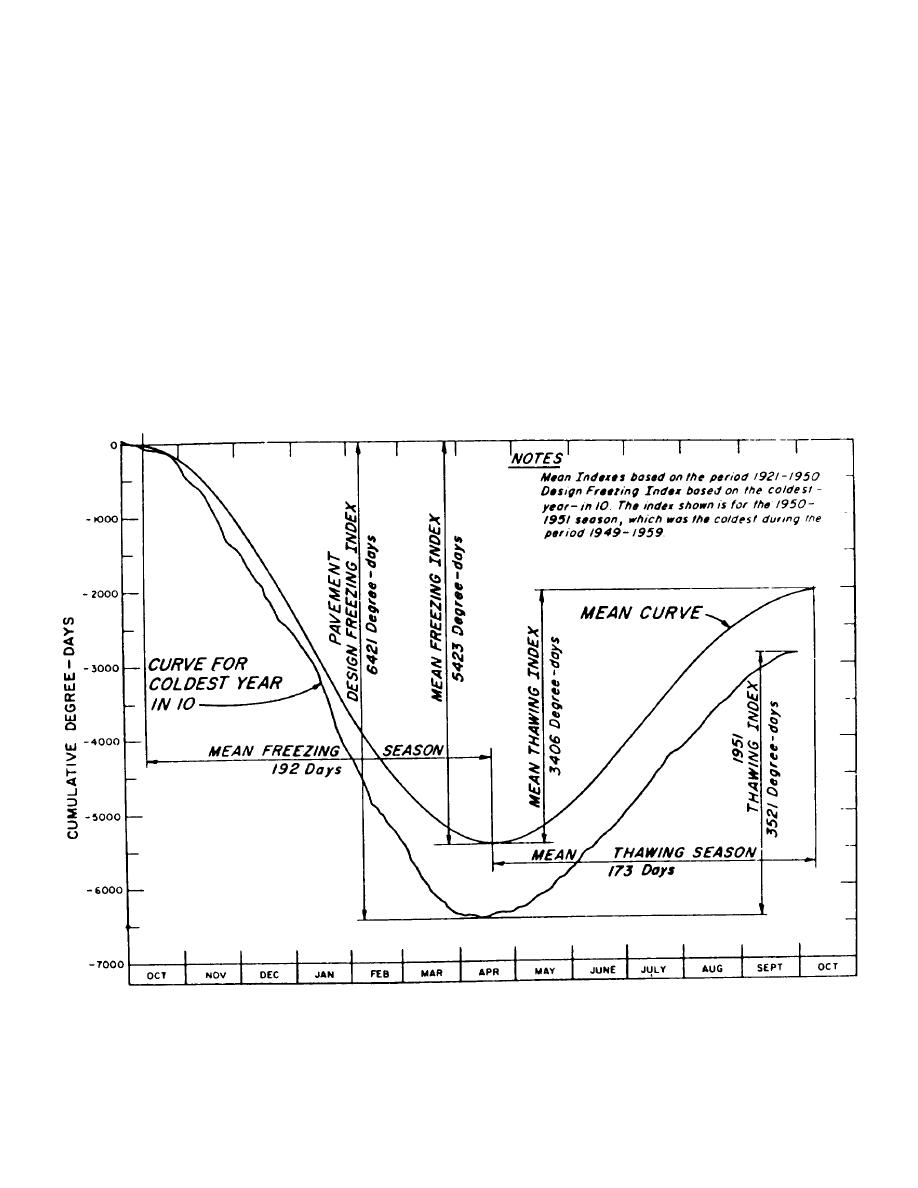
TM 5-852-1/AFR 88-10. Volume 1
manual, Fahrenheit degree-days are used. Figure 1-1
more than once in 5 years, unless the more recent
shows a typical curve obtained by plotting cumulative
temperature records indicate a significant change. A
degree-days versus time.
design freezing index for pavements is illustrated in
(6) Design, freezing index. For design of
figure 1-1.
(7) Design thawing index. The design
permanent pavements, the design freezing index should
thawing index is computed on the same frequency and
be the average air freezing index of the three coldest
other bases as the design freezing index, except that
winters in the latest 30 years of record. If 30 years of
summer thaw conditions are used.
record are not available, the air freezing index for the
(8) Freezeup period. The period during
coldest winter in a 10-year period may be substituted.
For design of foundations for average permanent
which the ground surface freezes and an ice cover is
structures, the design freezing index should be
forming on streams and lakes. The duration of the
computed for the coldest winter in 30 years of record or
freezeup period varies from 1 to 3 months, depending on
should be estimated to correspond with this frequency if
regional or local climatic conditions.
(9) Freezing index.
the number of years of record is limited. Periods of
The number of
record used should be the latest available. To avoid the
degree-days between the highest and lowest points on a
necessity for adopting a new and only slightly different
curve of cumulative degree-days versus time for one
freezing index each year, the design index at a site with
freezing season. It is used as a measure of the
continuing construction need not be changed
combined duration and magnitude of below-freezing
temperatures
U.S. Army Corps of Engineers
Figure 1-1. Determination of freezing and thawing indexes.
1-3



 Previous Page
Previous Page
